Simplicity Coimbatore ,Getting enough Vitamin C ? </a
The focus on this ingredient happened in such an unplanned manner that I wondered why I never wrote about it before. With the COVID 19 getting too close to our neighbourhoods, concerned people from the medical fraternity have taken to making videos stressing about the importance of Vitamin C, Vitamin D and zinc in our diets.
Coincidentally my sister-in-law sent us a large quantity of the amla .We locals refer to it as the malai nellikkai or periya nellikkai since the small star gooseberry is just as popular in this region.
The big bowl of gooseberries triggered a memory of a doctor’s visit around this time last year. I would often wake up to severe muscle cramps in the calf muscles and it began to unexpectedly show up in the middle of the day. It reached a point where pain and fear had me convinced that there was something not okay with my health.
Consulting the right doctor can make such a huge difference to the way we understand our physical capabilities/ limitations and how it is linked to nutrition.Dr.Karthik of Global Ortho and Trauma hospital , did the necessary check ups and in his matter of fact tone asked .”How often do you eat amla?” I had to admit that it was an ingredient greatly lacking in my regular diet.
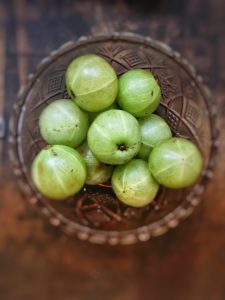
I learned later on that he recommends the nellikkai to almost every one of his patients. The benefits are so great that I felt incredibly foolish to have not made it a part of my food habits ! The good news is that a year later, the Vitamin C has made a huge difference in muscle recovery post workouts and in general wellness.
It is a sour ingredient,maybe even a bit bitter but has an incredibly sweet aftertaste especially when drinking water. With the addition of salt and red chilli powder, it becomes a whole other vibe. The great thing is that other than crunching it up plain we can include this ingredient in a few local recipes. A nellikkai chutney is one of the simplest and easiest dishes to have either with breakfast/dinner tiffin or with rice for lunch. All the ingredients are tossed together in a pan ,with oil and then blended together.
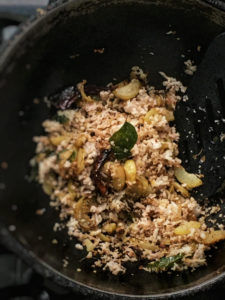
Following a recipe isn’t enough. We need to first highlight the power this berry has in making the body work the way it should. The muscular system which overlaps the skeletal frame, needs to be nourished in a manner that ensures it is functioning smoothly. The amla ,for us Indians, tops that list of ingredients for muscular health.
Written by Sumita Thomas on the’ Healthify Me’ page the information starts with, “It has eight times more vitamin C than an orange, twice the antioxidant power of acai berry, and around 17 times that of a pomegranate. The humble Indian gooseberry, commonly known as amla, truly deserves its superfood status.
The translucent green fruit, which derives its name from the Sanskrit word ‘Amlaki’ meaning “nectar of life”, can protect us against countless ailments, be it the common cold, cancer, or infertility. Ayurveda doctors claim that amla can help balance the three doshas (Kapha/vista/pitta) in the body and eliminate the underlying cause of many diseases.”
The article goes on to mention that it is good for eyesight , skin, hair, fights the common cold , makes the immune system stronger , has anti-inflammatory properties , helps treat chronic conditions like diabetes and arthritis and is an effective aid for relieving joint pain as well .
My cousin’s wife likes to add it to a glass of buttermilk along with the usual flavourings like cumin, ginger and green chillies and it is tastes really good. We can also add some grated amla to the tempering ingredients to temper curd rice.
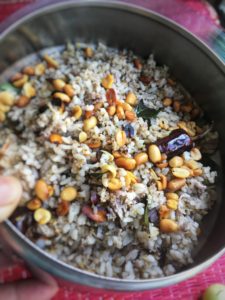
A few years ago, I received a recipe for amla rice,lovingly hand written by an elderly member of our community, because she was so happy that my work was focusing on local ingredients. To get that kind of response was incredibly overwhelming and emotional. Vimala ma ,as we all know her, is from a generation of home cooks who made everything from scratch. The wealth of knowledge they possess is staggering. It would probably be impossible to document it all. Her zest for life remains undiminished over time and she is always eager for food conversations! So, you can imagine how precious this recipe is . I am sharing an image of the original hand written version in this article.
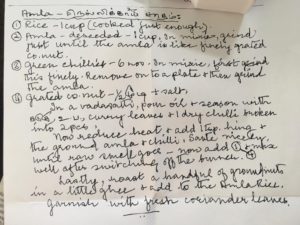
The amla chutney is made with ingredients like sesame, black urad dal which is equally beneficial in fortifying the body. Fry a tablespoon of sesame, a teaspoon of black lentil , a few dried red chillies and curry leaves in a pan with a little cold pressed sesame oil. Add about 3 gooseberries cut into chunks, fry well. Add a cup of grated coconut and fry well till it changes colour slightly. Add salt. Let cool and blend it with a little water to make a chutney. Add a final tempering of mustard seeds, curry leaves and dried red chillies before serving.It’s a very simple chutney.
When looking at traditional recipes one can’t help but notice how they are paired with other foods from the region.These days recipes add sugar to sweeten , flour to thicken….but in the recipes from the ‘olden days’, it is the coconut which acts as the sweetening agent in balancing the sour while at the same time adding so much of nutrition.
This article offers a double bonanza by way of two special recipes. Why restrict ourselves to chewable Vitamin C when we can have the advantage of adding such unique recipes to our diet. Health has to be a priority post COVID19 too !
I will always be grateful to have personally encountered what a difference adding an ingredient can make to understanding how the body works and responds.
Take care… stay safe, eat healthy and refrain from leading a sedentary lifestyle.
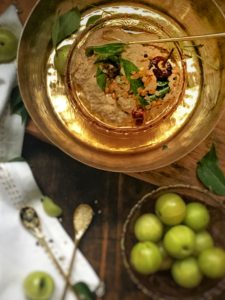

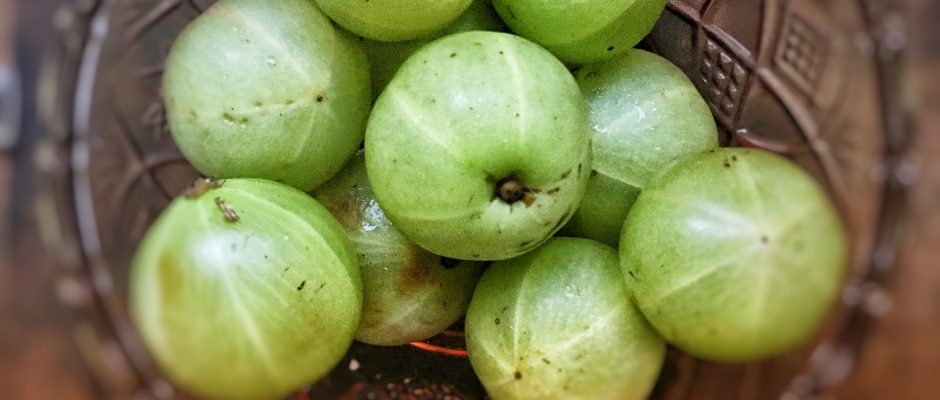
No comments yet.